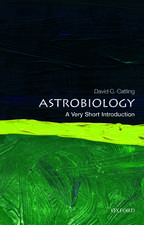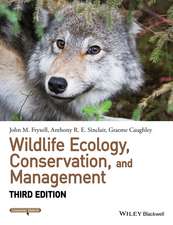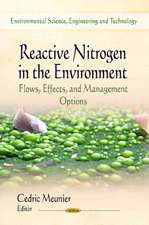Endosymbiosis
Editat de Wolfgang Löffelhardten Limba Engleză Hardback – 3 dec 2013
| Toate formatele și edițiile | Preț | Express |
|---|---|---|
| Paperback (1) | 1219.01 lei 6-8 săpt. | |
| SPRINGER VIENNA – 22 aug 2016 | 1219.01 lei 6-8 săpt. | |
| Hardback (1) | 1223.55 lei 6-8 săpt. | |
| SPRINGER VIENNA – 3 dec 2013 | 1223.55 lei 6-8 săpt. |
Preț: 1223.55 lei
Preț vechi: 1492.14 lei
-18% Nou
Puncte Express: 1835
Preț estimativ în valută:
234.12€ • 245.10$ • 193.72£
234.12€ • 245.10$ • 193.72£
Carte tipărită la comandă
Livrare economică 05-19 aprilie
Preluare comenzi: 021 569.72.76
Specificații
ISBN-13: 9783709113028
ISBN-10: 3709113024
Pagini: 350
Ilustrații: XI, 330 p. 43 illus., 32 illus. in color.
Dimensiuni: 155 x 235 x 25 mm
Greutate: 0.61 kg
Ediția:2014
Editura: SPRINGER VIENNA
Colecția Springer
Locul publicării:Vienna, Austria
ISBN-10: 3709113024
Pagini: 350
Ilustrații: XI, 330 p. 43 illus., 32 illus. in color.
Dimensiuni: 155 x 235 x 25 mm
Greutate: 0.61 kg
Ediția:2014
Editura: SPRINGER VIENNA
Colecția Springer
Locul publicării:Vienna, Austria
Public țintă
GraduateCuprins
Part I The heterotrophic eukaryotes.-1. Mitochondria and the origin of eukaryotes, B. F. Lang, Montreal.-
2. Modifications and innovations in the evolution of the mitochondrial protein import pathways, V. Hewitt, T. Lithgow and R. F. Waller, Melbourne.-
Part II Autotrophy as the driving force for endosymbiosis.- Primary endosymbiosis.-1. The single primary endosymbiotic event leading to the Archaeplastida, W. Löffelhardt, Vienna.-
2. Insertion of metabolite transporters into the endosymbiont membrane(s) as a prerequisite for primary endosymbiosis, F. Facchinelli and A. P.M. Weber, Düsseldorf.-
3. Evolution of the protein translocon at the envelopes of chloroplasts, M. S. Sommer and E. Schleiff, Frankfurt.-
4. Evolution of storage polysaccharide metabolism in Archaeplastida opens an unexpected window on the molecular mechanisms that drove plastid endosymbiosis, S. Ball, Lille.-
5. Analysis of the genome of Cyanophora paradoxa: an algal model for understanding primary endosymbiosis, D. Bhattacharya, D. C. Price, Ch. X. Chan, J. Gross, J. M. Steiner and W. Löffelhardt, Vienna.-
6. Photosynthetic Paulinella–recapitulation of primary plastid establishment, H. S. Yoon, E. Ch. Yang, H. Qiu and D. Bhattacharya, Suwon and New Brunswick.-
7. Rhopalodia gibba: The first steps in the birth of a novel organelle?, S. Adler, E. M. Trapp, C. Dede and U. G. Maier, Marburg.-
8. Secondary endosymbiosis, P. Gagat, P. Mackiewicz and A. Bodyl, Wroclaw.- 9. Chromera et al: Novel photosynthetic alveolates and apicomplexan relatives, M. Linares, D. Carter and S. B. Gould, Düsseldorf and Sydney.-
10. Nucleomorph comparative genomics, G. Tanifuji and J. M. Archibald, Halifax.-
11. Protein import into complex plastids: current findings and perspectives, C. Grosche, F. Hempel, K. Bolte, L. Abram, U. G. Maier and S. Zauner, Marburg.-
12. Tertiary plastid endosymbiosis in dinoflagellates, P. Gagat, P. Mackiewicz and A. Bodyl, Wroclaw.-
13. Endosymbioses in sacoglossan seaslugs: Photosynthetic animals that keep stolen plastids without borrowing genes, H. Wägele and W, F. Martin, Bonn and Düsseldorf.
2. Modifications and innovations in the evolution of the mitochondrial protein import pathways, V. Hewitt, T. Lithgow and R. F. Waller, Melbourne.-
Part II Autotrophy as the driving force for endosymbiosis.- Primary endosymbiosis.-1. The single primary endosymbiotic event leading to the Archaeplastida, W. Löffelhardt, Vienna.-
2. Insertion of metabolite transporters into the endosymbiont membrane(s) as a prerequisite for primary endosymbiosis, F. Facchinelli and A. P.M. Weber, Düsseldorf.-
3. Evolution of the protein translocon at the envelopes of chloroplasts, M. S. Sommer and E. Schleiff, Frankfurt.-
4. Evolution of storage polysaccharide metabolism in Archaeplastida opens an unexpected window on the molecular mechanisms that drove plastid endosymbiosis, S. Ball, Lille.-
5. Analysis of the genome of Cyanophora paradoxa: an algal model for understanding primary endosymbiosis, D. Bhattacharya, D. C. Price, Ch. X. Chan, J. Gross, J. M. Steiner and W. Löffelhardt, Vienna.-
6. Photosynthetic Paulinella–recapitulation of primary plastid establishment, H. S. Yoon, E. Ch. Yang, H. Qiu and D. Bhattacharya, Suwon and New Brunswick.-
7. Rhopalodia gibba: The first steps in the birth of a novel organelle?, S. Adler, E. M. Trapp, C. Dede and U. G. Maier, Marburg.-
8. Secondary endosymbiosis, P. Gagat, P. Mackiewicz and A. Bodyl, Wroclaw.- 9. Chromera et al: Novel photosynthetic alveolates and apicomplexan relatives, M. Linares, D. Carter and S. B. Gould, Düsseldorf and Sydney.-
10. Nucleomorph comparative genomics, G. Tanifuji and J. M. Archibald, Halifax.-
11. Protein import into complex plastids: current findings and perspectives, C. Grosche, F. Hempel, K. Bolte, L. Abram, U. G. Maier and S. Zauner, Marburg.-
12. Tertiary plastid endosymbiosis in dinoflagellates, P. Gagat, P. Mackiewicz and A. Bodyl, Wroclaw.-
13. Endosymbioses in sacoglossan seaslugs: Photosynthetic animals that keep stolen plastids without borrowing genes, H. Wägele and W, F. Martin, Bonn and Düsseldorf.
Notă biografică
Born in Vienna, Wolfgang Löffelhardt studied chemistry at the University of Vienna finalized 1972 with a thesis on the biosynthesis of secondary plant compounds. During a post-doctoral fellowship at the University of Marburg/FRG he worked on aromatic metabolism in chloroplasts and – for comparative purposes – in cyanobacteria. This prompted his interest in the endosymbiotic evolution of plastids. Back in Vienna, he became lecturer and then associate professor at the Insitute of Biochemisty and Cell Biology which is now part of the Max F. Perutz Laboratories. In 1978 he found his favorite organism, Cyanophora paradoxa, which he has studied ever since, largely in collaboration with Hans J. Bohnert (Düsseldorf/FRG, Tucson/AZ, and Urbana/IL). The peculiar plastids of this alga are surrounded by an unique peptidoglycan wall, a convincing proof of the endosymbiont theory. After his retirement in October 2008 he joined the Cyanophora Genome Sequencing Project headed by Debashish Bhattacharya (New Brunswick/NJ). The recently completed genome corroborated the concept of a single primary endosymbiotic event, i.e., the monophyly of the kingdom “Plantae”.
Textul de pe ultima copertă
The origin of energy-conserving organelles, the mitochondria of all aerobic eukaryotes and the plastids of plants and algae, is commonly thought to be the result of endosymbiosis, where a primitive eukaryote engulfed a respiring α-proteobacterium or a phototrophic cyanobacterium, respectively. While present-day heterotrophic protists can serve as a model for the host in plastid endosymbiosis, the situation is more difficult with regard to (the preceding) mitochondrial origin: Two chapters describe these processes and theories and inherent controversies. However, the emphasis is placed on the evolution of phototrophic eukaryotes: Here, intermediate stages can be studied and the enormous diversity of algal species can be explained by multiple secondary and tertiary (eukaryote-eukaryote) endosymbioses superimposed to the single primary endosymbiotic event. Steps crucial for the establishment of a stable, mutualistic relationship between host and endosymbiont, as metabolic symbiosis, recruitment of suitable metabolite transporters, massive gene transfer to the nucleus, development of specific translocases for the re-import of endosymbiont proteins, etc. are discussed in individual chapters. Experts, dealing with biochemical, genetic and bioinformatic approaches provide insight into the state of the art of one of the central themes of biology. The book is written for graduate students, postdocs and scientists working in evolutionary biology, phycology, and phylogenetics.
Caracteristici
Comprehensively describes the origin of eukaryotes with a focus on phototrophs
Has an interdisciplinary approach
Is written by experts in the fields coming from different backgrounds
Clearly depicts the mechanism of primary, secondary and tertiary endosymbiosis
Includes supplementary material: sn.pub/extras
Has an interdisciplinary approach
Is written by experts in the fields coming from different backgrounds
Clearly depicts the mechanism of primary, secondary and tertiary endosymbiosis
Includes supplementary material: sn.pub/extras










